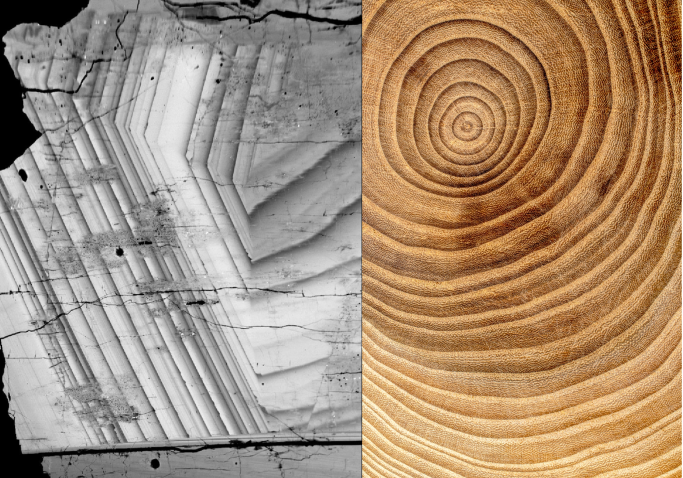 Left: oscillatory zoning in a crystal; right: growth rings in a tree
Left: oscillatory zoning in a crystal; right: growth rings in a treeWhat really happens in the belly of volcanoes? How does magma behave in the inscrutable depths of magma chambers? and then how does it change its nature when it rises up to reach the Earth surface during an eruption? In the 19th century, Jules Verne relied on his imagination to describe a fantastic underground world, in which one could go down and then come back up through the conduits of "our" volcanoes. Despite dizzying technological progress and extraordinary scientific achievements, man has yet to penetrate the depths of the earth's crust to reveal the details of the inner dynamics of our planet. For this reason we still rely on indirect methods to study the evolution of magmas. A volcano forms when magma rises from the magma chamber and becomes lava when it erupts. Lava then inevitably solidifies becoming a rock. By studying this rock it is possible to analyze the internal structure of the contained crystals. These very crystals often bear the "signs" of the magmatic processes that generated them and made them grow. Crystals form and grow (or "melt") within the magma by responding to the physical conditions in which the magma itself has experienced over time. To simplify, in some cases the volcanologist studies the internal structure of crystals like the botanist studies the growth rings in tree trunks (see figure). In the present study, also supported by the UNO Project, Piergiorgio Moschini and his colleagues conducted a research to draw up guidelines that will allow to better understand the complex dynamics of the magmas that feed Etna and Stromboli volcanoes. The obtained results show that the growth rates and chemical compositions of the crystals behave like "time windows", capable of recording temperatures, volatile content and, ultimately, the rate of residence or ascent of magma within the volcano's feeding system. Readers eager to learn more can access the full text here, but we warn you that solid foundations in thermodynamics are needed for a proper comprehension!

